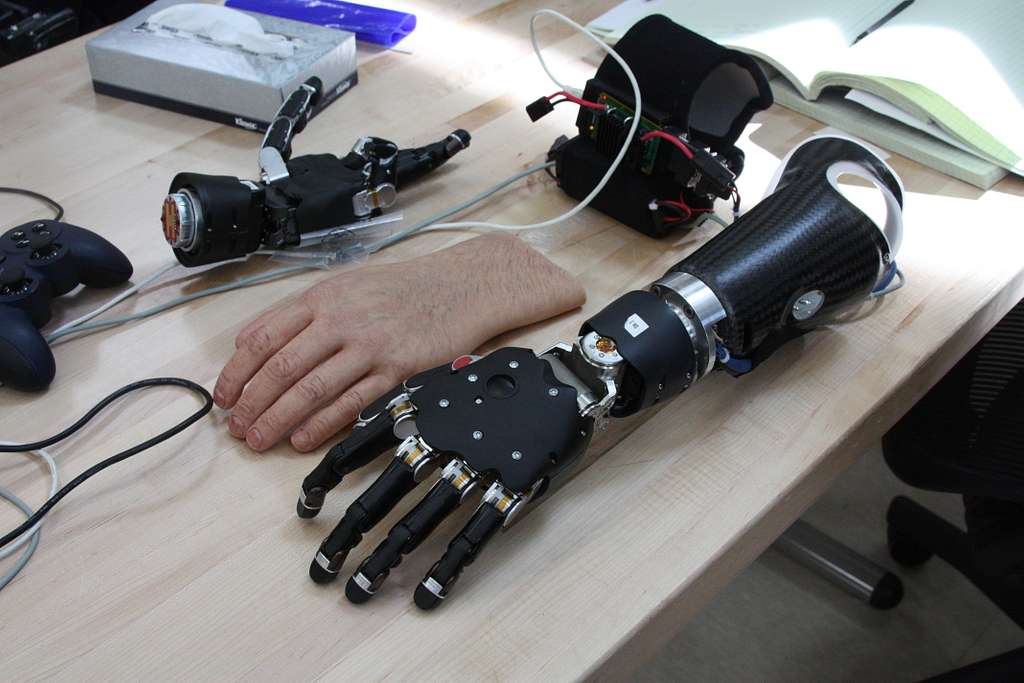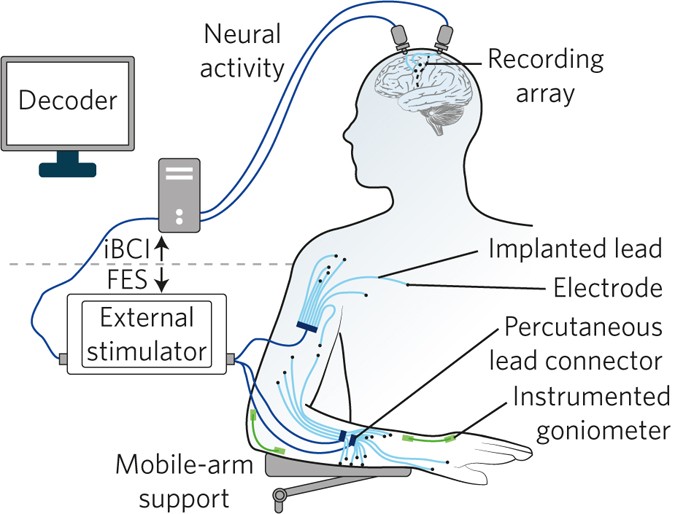“The only way of discovering the limits of the possible is to venture a little way past they into the impossible.” – Arthur C. Clarke

Losing a limb or motor function can be life altering but what if you could regain control through the power of your own mind? Once a concept confined to science fiction, motor neuroprostheses and bionic limbs are now turning fiction into reality. By translating neural signals into motion, these mechanisms are helping individuals with amputations and paralysis regain independence.
As this technology advances it raises exciting possibilities but also ethical dilemmas. Who will have access to these life-changing innovations? Could such prostheses one day surpass biological limbs? In this blog, we’ll explore how neuroprostheses work, their real-life applications, and the challenges that may shape the future of such technology.
From Imitation to Innovation
Prosthetics have come a long way since their invention in 950 BC [1]. The first designs primarily focused on restoring appearance whilst, modern prosthetics aim to replicate movement and even restore lost sensations.
The video below provides a timeline of key advancements in prosthetic technology; showcasing how innovations have improved both functionality and quality of life for users.
What are Neuroprostheses?

At the present day, technology has advanced massively since the first prosthetic; leading to the development of neuroprostheses. Neuroprostheses are bio-hybrid devices that connect electrodes to human tissue to activate neurons or record their activity; in order to regain or amplify lost motor, sensory or cognitive functions [2].
Even after an individual loses a limb or the control of a limb the brain signals responsible for the control of the limb remain in tact. Neuroprostheses takes advantage of this; electrodes are implanted into the area of the brain related to the lost movement, and record electrical activity. These brain signals are then translated to control signals via processing through brain computer interfaces (BCI) or brain machine interfaces (BMI). These control signals can then be used to operate external devices such as robotic arms or they can be used to stimulate the muscle directly to restore lost motor function [3].
Navigating the Ethics of Enhancing Humanity
As promising as neuroprosthetic technology is, it also rases concern to complex ethical dilemmas. How far should we go in enhancing human abilities? What are the consequences of merging biology with advanced technology? How accessible should these life-changing innovations be? These are just a few questions sparking debate as we push the boundaries of what’s possible with bionic limbs and neuroprosthetics. While the potential benefits may be undeniable, it’s important to consider any potential risks and moral implications of integrating technology into the human body.

One of the most pressing ethical concerns surrounding neuroprosthetics is their accessibility. For example, in a recent article about children receiving bionic arms as life-changing gifts, it’s highlighted that bionic arms can cost up to £180,000, making them unattainable for many families unless supported by generous donations. This raises an essential question: should life-changing technologies be available only to those who can afford them?
With cutting edge innovations being financially exclusive, we risk deepening existing inequalities within healthcare; leaving the most vulnerable without access to the help they need. As neuroprosthetics evolve, it’s crucial that we address how to make these life altering devices accessible to everyone, not just those with the means to pay. While the physical and emotional benefits for those who receive them are undeniable, the ethical dilemma of who can access these advancements remain a critical issue.
In conclusion, neuroprosthetics are a powerful example of pushing the boundaries of what’s possible. The future of neuroprosthetics relies not only on innovation but on making these life-changing technologies equitable and accessible.
References:
- Admin U. UPMC HealthBeat. 2015 [cited 2025 Mar 11]. Timeline: Prosthetic Limbs Through the Years. Available from: https://share.upmc.com/2015/03/timeline-prosthetic-limbs-years/
- Neuroprosthetics – an overview | ScienceDirect Topics [Internet]. [cited 2025 Mar 11]. Available from: https://www.sciencedirect.com/topics/neuroscience/neuroprosthetics
- Gupta A, Vardalakis N, Wagner FB. Neuroprosthetics: from sensorimotor to cognitive disorders. Commun Biol. 2023 Jan 6;6(1):1–17.
This is a good blog. You introduce the reader to the topic of prosthetics and bionic limbs in a very accesible, blog-like way. The formatting and writing makes the blog really easy to read and engage the reader into the topic. The ethical consideration in your blog are very open and possibly by taking an approach to showcase your own opinion and reflection on bionic limbs, their limitations and accessability, could improve your blog.